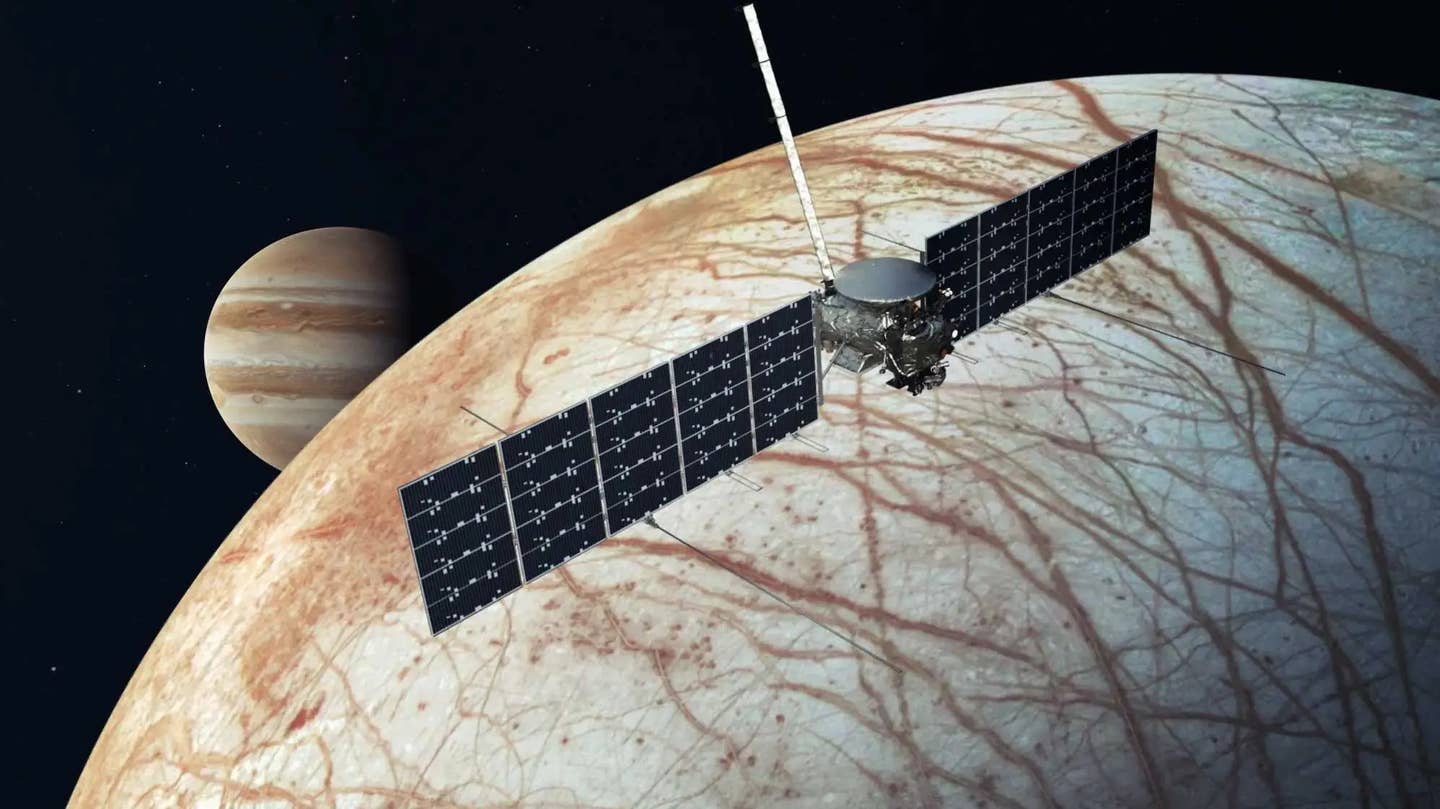NASA Awaits ‘All-Clear’ for Mission to Search for Life on Jupiter’s Moon
Space agency is gearing up to send Europa Clipper, the largest spacecraft it has developed for a planetary mission, on a 1.8-billion-mile journey.

An artist’s concept of NASA’s Europa Clipper, the largest spacecraft the agency has developed for a planetary mission. [Courtesy: NASA]
NASA is gearing up to search for signs of life on Jupiter’s frozen moon with Europa Clipper, the largest spacecraft it has ever developed for a planetary mission.
The agency on Sunday stood down from Thursday’s scheduled Europa Clipper launch due to the approaching Hurricane Milton. But crews on Friday completed one of the final steps in the prelaunch checklist, moving the spacecraft to the hangar at Launch Complex 39A at Kennedy Space Center in Florida. The launch window remains open until November 6.
“Once we have the ‘all-clear’ followed by facility assessment and any recovery actions, we will determine the next launch opportunity for this NASA flagship mission,” said Tim Dunn, senior launch director for NASA’s Launch Services Program.
Europa Clipper will fly nearly 1.8 billion miles to Jupiter’s icy moon, Europa, to study whether the rocky satellite could support life. The mission will produce the first detailed investigations of the moon and is expected to enter Jovian orbit in 2030.
Scientists believe Europa may hold an ocean beneath its icy surface that contains twice as much liquid water as all oceans on Earth, despite it being about the same size as our moon. NASA will perform nearly 50 close-proximity flybys to explore its composition and geography, coming as close as within 16 miles of the surface. The goal is to produce a scan of the entire moon.
NASA selected Europa Clipper in 2017 and began building the eponymous spacecraft in 2019. With its massive solar arrays unfurled, the vehicle is about 100 feet long, about the size of a basketball court. The spacecraft’s large solar panels will power it as it cruises through a portion of space more than five times as far from the Sun as Earth.
The robotic craft will weigh nearly 13,000 pounds at launch, about half of which comes from the weight of propellant. Adding to that is an array of nine dedicated science instruments, which are shielded by a vault made of titanium and aluminum to protect against radiation. Spectrometers will produce high-resolution maps of Europa’s surface and atmosphere, and ice-penetrating radar will scan for water below the surface. Other tools will be used to locate warmer pockets of ice, for example.
Europa Clipper will launch atop a SpaceX Falcon Heavy rocket from Launch Complex 39-A at Kennedy. En route to Europa, it will perform a pair of “gravity assists,” using the pull of both Earth and Mars to propel itself further.
The spacecraft is expected to enter Jupiter’s orbit in April 2030 and perform its first flyby of Europa the following spring. Science instruments will begin collecting data in May 2031. The mission is scheduled to conclude in September 2034 when Europa Clipper smashes into Jupiter’s largest moon, Ganymede.
NASA will provide live prelaunch and launch coverage on its website and social media channels. Members of the public can also register to attend the launch virtually.
Like this story? We think you'll also like the Future of FLYING newsletter sent every Thursday afternoon. Sign up now.

Sign-up for newsletters & special offers!
Get the latest FLYING stories & special offers delivered directly to your inbox






